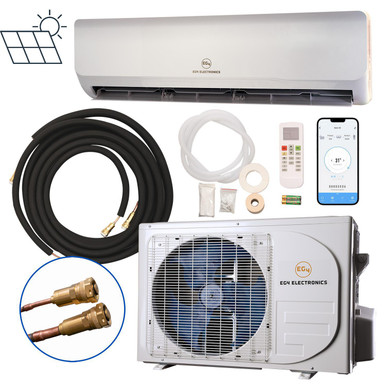Damn Yankee
New Member
Hi Folks, Newb here.
Big picture - grid is permanently down and my battery is dead with no possibility of replacing it.
From my research, it appears all Solar systems require a load - battery or grid or something. And I expect what kind of load depends upon what type of system. I am looking for a Hybrid as I want AC available when the grid goes down. But it seems all Hybrids require a battery, and besides backup, it seems to have to do also with voltage regulation. What happens when there is no battery, and the grid is down?
I get the simple - no power with no Sun. But what are the repercussions of a clear day, PVs have full power available, and my load is absolute minimum. What happens to the system's componentry?
With so many different manufacturers and proprietary features, it is literally head-spinning for a Newb to navigate. I've trolled the Internet for weeks for that answer. All sites presume a battery is present or generator or grid. I found only a couple sites that talked about off-grid, no battery and no generator but they were so full of typos and double-speak, I walked away with no clear answer. It seems the Solar Industry does not contemplate that the grid might go down for years or forever (thus halting battery production, oil pumping, gas refining, and everything else that relies on electricity of which we take for granted, which is pretty much everything). Either I missed a manufacturer's system with the answer buried in the hype, or this is experimental territory. Does the Danger Zone have advice, ideas, answers?
Thanks,
John
Big picture - grid is permanently down and my battery is dead with no possibility of replacing it.
From my research, it appears all Solar systems require a load - battery or grid or something. And I expect what kind of load depends upon what type of system. I am looking for a Hybrid as I want AC available when the grid goes down. But it seems all Hybrids require a battery, and besides backup, it seems to have to do also with voltage regulation. What happens when there is no battery, and the grid is down?
I get the simple - no power with no Sun. But what are the repercussions of a clear day, PVs have full power available, and my load is absolute minimum. What happens to the system's componentry?
With so many different manufacturers and proprietary features, it is literally head-spinning for a Newb to navigate. I've trolled the Internet for weeks for that answer. All sites presume a battery is present or generator or grid. I found only a couple sites that talked about off-grid, no battery and no generator but they were so full of typos and double-speak, I walked away with no clear answer. It seems the Solar Industry does not contemplate that the grid might go down for years or forever (thus halting battery production, oil pumping, gas refining, and everything else that relies on electricity of which we take for granted, which is pretty much everything). Either I missed a manufacturer's system with the answer buried in the hype, or this is experimental territory. Does the Danger Zone have advice, ideas, answers?
Thanks,
John




